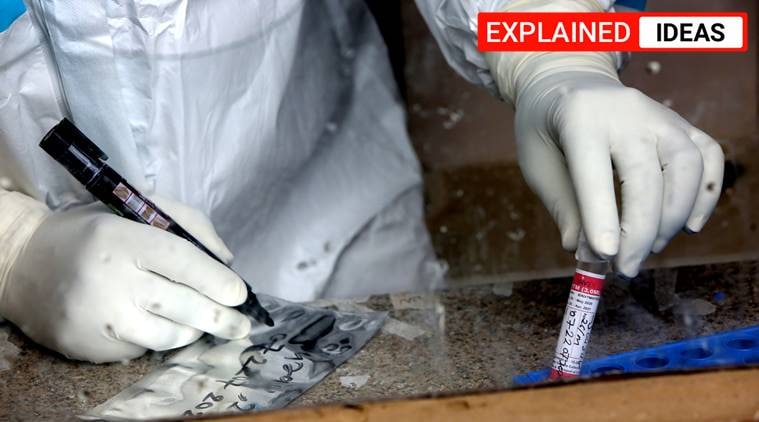Explained Ideas: Why the results of the sero-prevalence survey in Delhi offer hope
Next phase of Covid-19 in India needs less fear and better governance, writes Milind Sohoni.
 A health worker records a swab sample at a Covid-19 testing centre in New Delhi. (Express Photo: Gajendra Yadav)
A health worker records a swab sample at a Covid-19 testing centre in New Delhi. (Express Photo: Gajendra Yadav)
In his opinion piece, Milind Sohoni from the Centre for Technology Alternatives for Rural Areas, IIT Bombay says the results of the sero-prevalence survey in Delhi are remarkable and should provide a turning point in the management of the epidemic.
Of the 198 lakh people of Delhi, 23 per cent, that is, close to 45 lakh have been infected. Of these 45 lakh, the number of officially confirmed cases is a mere 1.23 lakh, of which roughly 3,700 people have died.
“This gives us an infection fatality ratio (IFR) of about 0.9 per 1,000. This is, of course, much less than that in the US, Germany and other countries and more in line with other tropical countries such as Thailand,” says Sohoni.
The second fact is the timing. It was about July 10 that the intensity of the epidemic started to diminish in Delhi.
Moreover, the informal workers of Delhi who stay in dense pockets were the first to face the epidemic and are most likely to have developed this immunity. Since they form the matrix for a majority of the social and economic transactions in the city, their immunity should be an important factor in slowing the epidemic.
That such heterogeneity in the population, in terms of number of daily contacts, may hasten the onset of herd immunity was recently noted in the reputed journal, Science, in their June issue. And this is what seems to be playing out in Delhi.
A similar scenario is unfolding in Mumbai, Ahmedabad and other cities of India.
“Thus, if we continue to take care, we will now see a slow burn and the extinguishing of the virus within our major cities,” he writes. But, he warns, the results also show that Coronavirus is indeed intensely infectious, and the next phase of the disease needs better governance.
Also read | How to read the serological survey results from Mumbai, Delhi
- 01
- 02
- 03
- 04
- 05






































